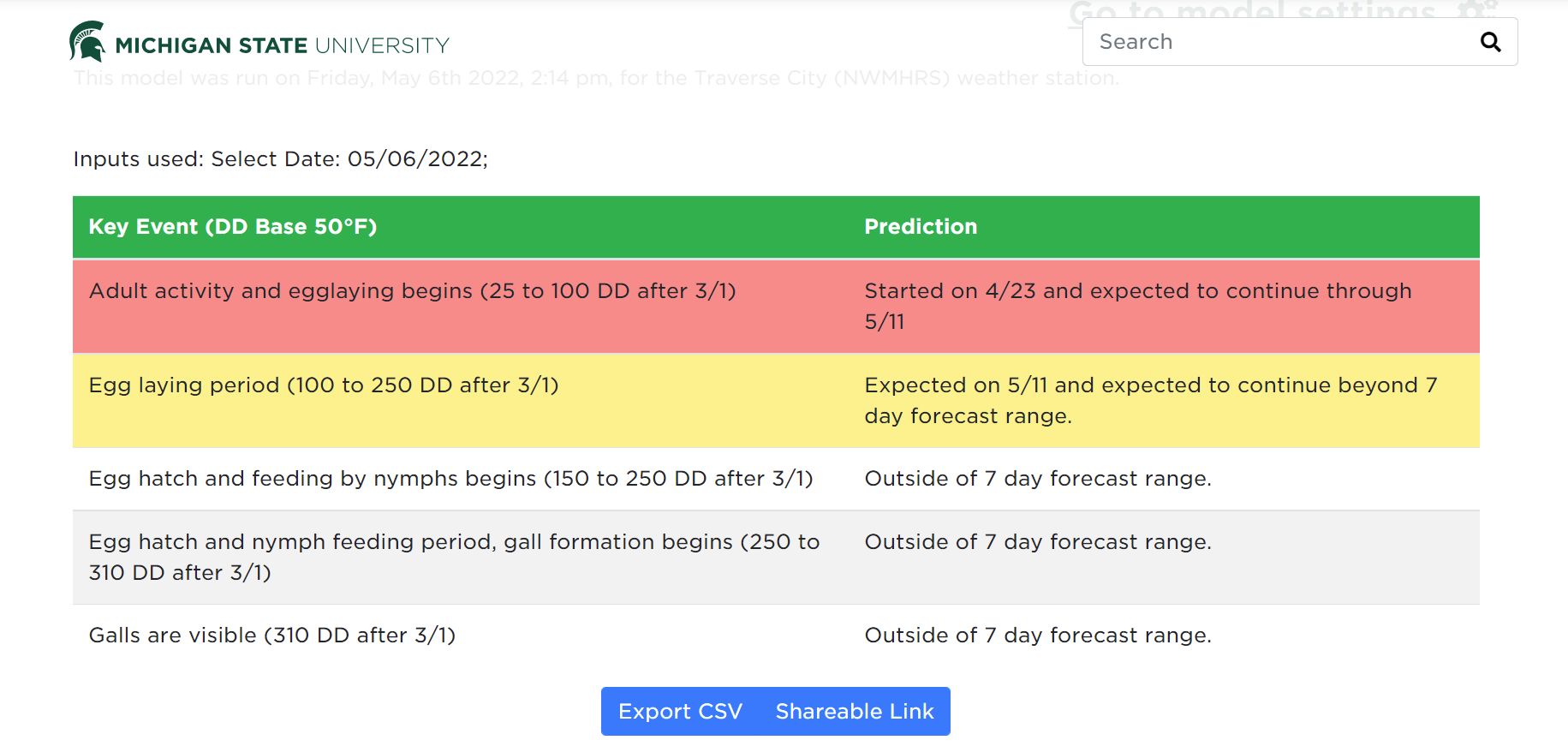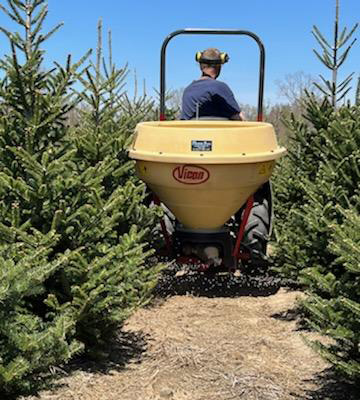Christmas tree scouting report - May 11, 2022
Scouting, weather and farm practice updates for Christmas tree growers.

Insect update
Overwintering stem mothers of eastern spruce gall adelgid were observed laying eggs on infested white spruce trees in the Lake City, Michigan, area. This pest infests white spruce and white spruce cultivars such as black hills spruce. Often, the same trees are repeatedly colonized year after year. This insect is not native to North America, and while it has been here for decades, there is evidence that some trees are simply more attractive to the adult females when they are laying eggs.
Feeding nymphs, the immature stage, cause galls to form behind the current-year shoots. Galls are usually roundish and substantially smaller compared with galls on Colorado blue spruce caused by Cooley’s spruce gall adelgid. Galls typically do not affect tree vigor or growth unless they are very abundant. Galls will, however, affect the appearance of trees (Photo 1). A few galls may be overlooked by customers, who often think they are looking at cones on the affected trees.
To protect trees from eastern spruce gall adelgid, especially trees near harvest, it is best to target the stem mothers, as they lay eggs. Once galls form, you can also clip off and destroy the green galls before the next generation of adelgids emerge. Burn or otherwise destroy the green galls to ensure the young adelgids cannot develop and emerge. Once galls have turned reddish-brown and opened, removing the galls will have no effect on adelgid density.
Trees with abundant galls can also be sprayed in fall when winged females are colonizing trees. Michigan State University Extension recommends scouting white spruce blocks that had lots of galls last year. MSU Enviroweather has an eastern spruce gall adelgid model to help you estimate eastern spruce gall adelgid development. Select the weather station nearest to your farm location to see the expected stage of eastern spruce gall adelgid in your area (Photo 2).

Other early season pests for growers to be aware of include Cooley spruce gall adelgid (Colorado blue spruce, Douglas fir), white pine weevil (spruces, Scotch pine) and Zimmerman pine moth (Scots and Austrian pines).
Weather update
This spring has been abnormally cool and is running about one week behind normal in growing degree day accumulation. However, the week of May 9 is forecasted to be warmer than normal. For more specific forecast information, check out the latest from MSU meteorologist Jeff Andresen.
Farm practice update
Growers have been planting new seedlings (Photo 3). Some planting continues. Growers that use preemergent herbicide for weed management are currently making applications. Be aware that most products require applications be made prior to budbreak and preemerge products need to be washed into the soil prior to activation. Apply fertilizer applications prior to budbreak to prevent new growth from being damaged by fertilizer (Photo 4).





 Print
Print Email
Email

